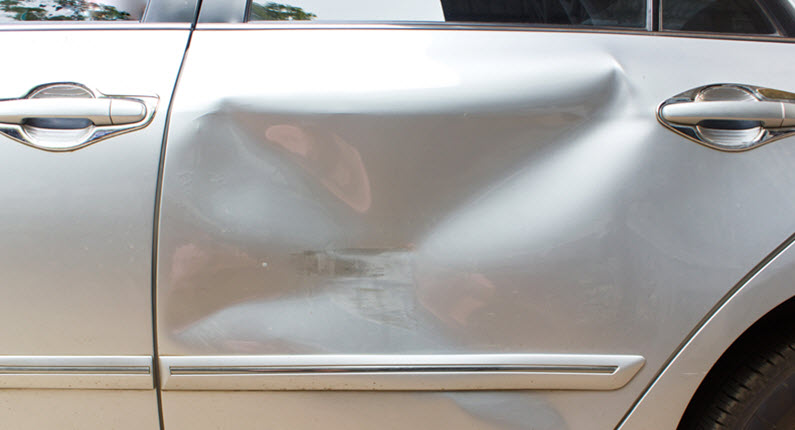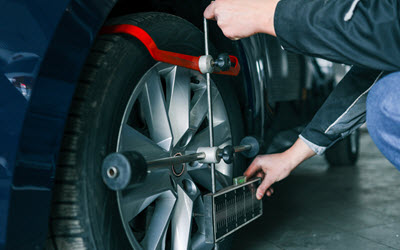
If the Volkswagen has recently sustained body damage, then it will exhibit specific symptoms that include a decline in fuel efficiency, a change in handling, and increased wind noise. Modern cars are engineered with a focus on aerodynamics to minimize air resistance.
Any disruption to the vehicle’s smooth, factory-designed contours from misaligned panels and dents to improper gap spacing can increase the drag that forces the engine to work harder and consume more fuel. By focusing on these details, one can return the Volkswagen to its intended performance, which can restore both its efficiency and value.
Why Aerodynamics and Efficiency are Inseparable
On highways, 50% of fuel is used to overcome air resistance and drag. A small dent or a misaligned panel can cause turbulent airflow, which creates resistance and forces the engine to expend more energy. Modern vehicles are designed with a low drag coefficient to maximize efficiency.
A disruption in airflow can affect the car’s stability at higher speeds. If a vehicle’s balance is compromised, then the driver must make constant minor adjustments that can add another layer of inefficiency. Restoring the Volkswagen to its factory-engineered state means restoring its original driving dynamics, safety, and fuel economy.
Choosing the Right Repair Partner
- Choose a Volkswagen Certified Repair Facility: These shops have invested heavily in the proper training, tools, and equipment that are approved by Volkswagen. Their technicians receive specific ongoing training for all the Volkswagen models and ensure they understand the manufacturer’s strict repair guidelines.
- Insist on OEM Parts: OEM parts are produced by the same company that manufactures the Volkswagen. They are an exact fit with the same factory specifications and tolerances as the original components. Cheap and aftermarket parts may not fit correctly and can create inconsistent panel gaps that can disrupt the airflow. A Volkswagen-certified shop will always use the OEM parts that can preserve the car’s authenticity and performance.
- Check for I-CAR Certifications: I-CAR is an industry standard for technician training. The certified technicians have the expertise to perform advanced repairs correctly, which is vital for vehicles with complex safety and structural systems.
Addressing Body and Panel Damage
- Precision Panel Alignment: Technicians should use specialized equipment to measure and align all replacement or repaired panels, including the hood, fenders, doors, and bumpers, to factory standards. Keeping an eye out for consistent gaps is important to ensure smooth airflow over the car’s exterior.
- Repairing Surface Imperfections: Minor dents are not properly pulled and smoothed, and can cause turbulent air. An experienced technician will fill and sand the bodywork to restore a perfectly smooth and continuous surface that can eliminate any disruption to the airflow.
- The Power of the Underbody: Many drivers and less qualified technicians overlook the vehicle’s underside, and this is a major contributor to aerodynamic efficiency. Inspecting for any damage to underbody panels, shrouds, and trim that shield the components, like the exhaust and suspension, from direct airflow is necessary. These parts are designed to create a flat and smooth surface for air to flow under the vehicle that minimizes the drag and turbulence.
If any underbody plastics have been damaged or missed in a collision, then they should be replaced to factory specifications. Ensuring all trim clips and fasteners are correctly installed to prevent panels from sagging, which would defeat their purpose.
The Crucial Role of Suspension and Alignments
- Perform a 4 Wheel Alignment: Correct wheel alignment is essential for a vehicle’s dynamics and efficiency. After any collision that involves the suspension, a four-wheel alignment should be a part of the repair process. Misaligned wheels can increase rolling resistance, forcing the engine to work harder and reducing gas mileage.
- Check Suspension Components: A technician will inspect the control arms, ball joints, tie rods, and other suspension components for damage. If the wheel alignment can be corrected, damaged or bent components can compromise the vehicle’s stability and cause premature tire wear.
Restoring Volkswagen’s Value in Dallas: The Importance of Precision Collision Repair
Restoring the Volkswagen’s aerodynamics  and overall efficiency requires more than just fixing visible damage. It demands attention to detail from precision panel alignment and repairing hidden underbody imperfections to ensure a flawless wheel alignment. Any shortcuts in this process can lead to long-term consequences, such as poor fuel economy and compromised vehicle handling.
and overall efficiency requires more than just fixing visible damage. It demands attention to detail from precision panel alignment and repairing hidden underbody imperfections to ensure a flawless wheel alignment. Any shortcuts in this process can lead to long-term consequences, such as poor fuel economy and compromised vehicle handling.
At Ames Collision Center, located in Dallas, Texas, we have Volkswagen-certified technicians with the expertise, and we utilize factory-approved tools to restore the vehicle to its factory-engineered state. We only use OEM parts to guarantee a perfect fit and preserve the car’s authenticity. You can contact us today to schedule an inspection, as we have certified expertise and decades of experience. So, Ames Collision Center is your trusted partner for the restoration that brings back your Volkswagen’s original performance, safety, and value.

